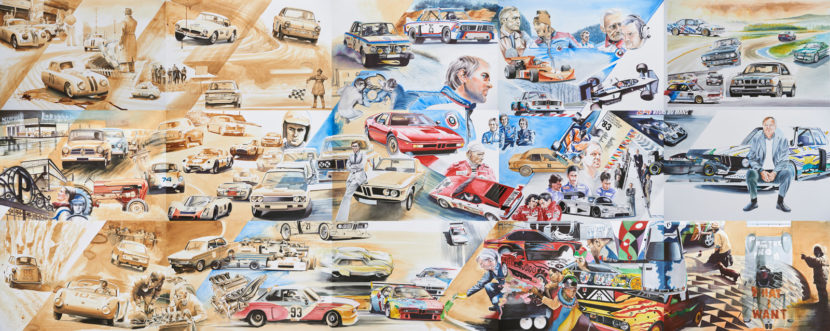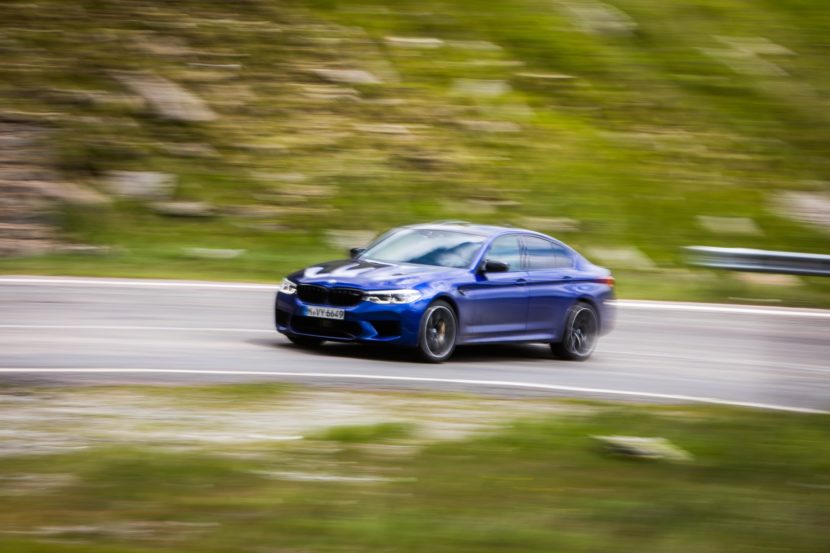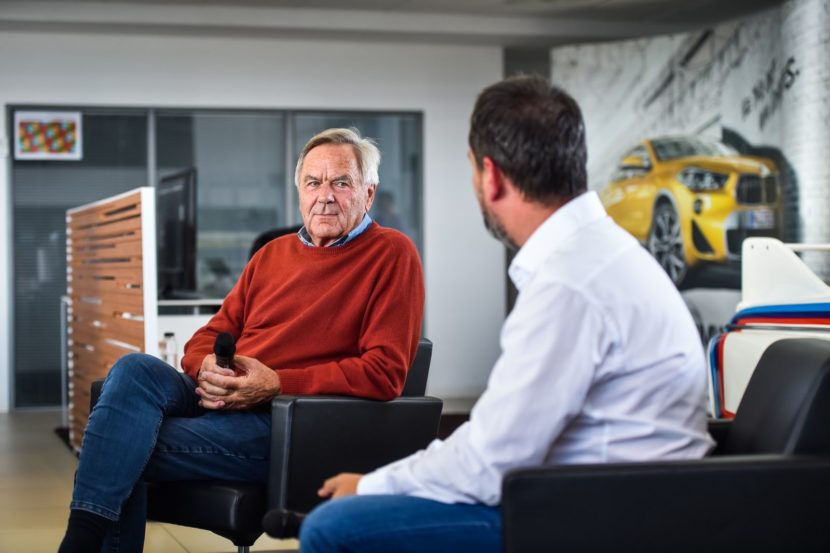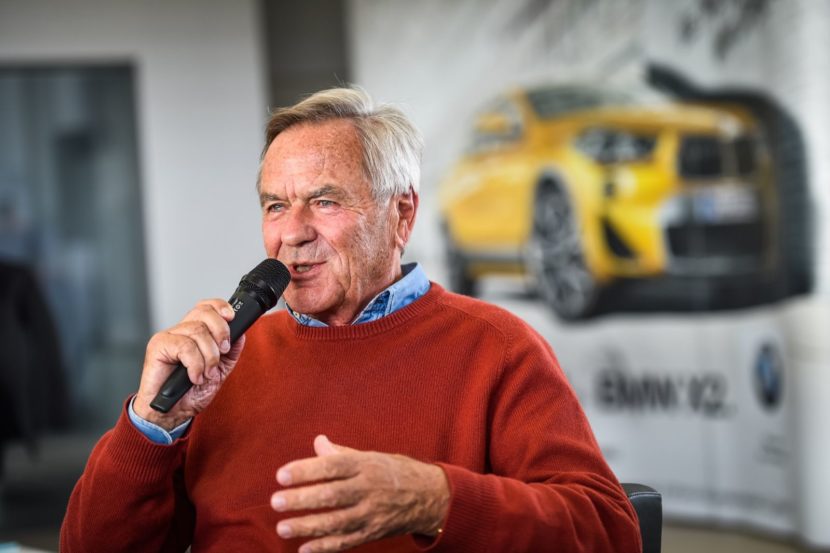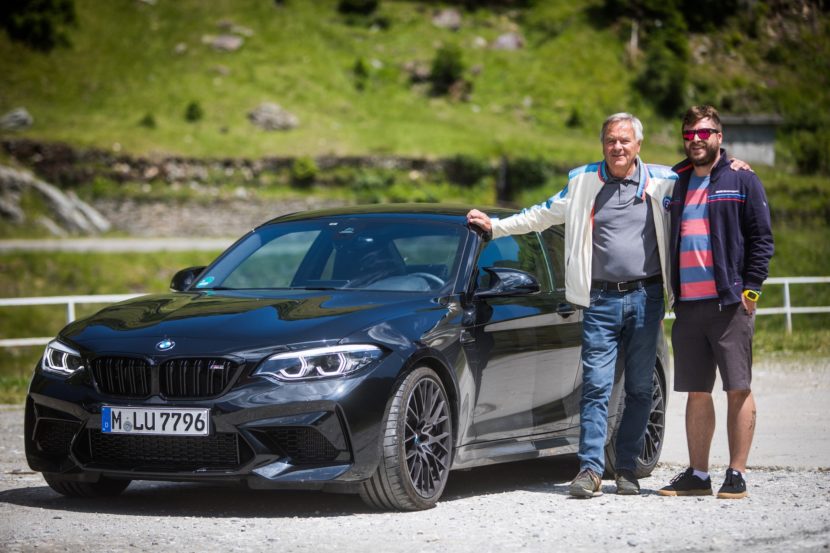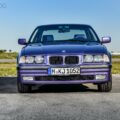Old school fans of the BMW M division know there’s one man in this world who is responsible for the birth of their favorite brand. That man is none other than Jochen Neerpasch. That name is now legendary and will remain so for ever, thanks to his brilliant mind. And for all that he’s achieved over the years, when you meet him, you can’t but be humbled by his modesty.
I am a truly lucky man. Over the years, doing this job, I got to experience things that are not even remotely accessible for everyone. I’m not necessarily talking about materialistic things but rather about experiences. One of the highlights of my 30 years on this planet was meeting Jochen Neerpasch, not on one occasion but two. The first came two years ago, when a special exhibit created in his honor was unveiled in Bucharest, thanks to the local BMW branch.
The ‘Blue Hero’ installation is now up for display at the BMW CCA Foundation and it is absolutely brilliant, painting this man’s legacy in shades of blue and brown. I had another chance to meet him this year, during a drive on one of the most famous roads in the world: the Transfagarasan highway.
 Brought to the world’s attention by the former dynamic trio of Top Gear, the Transfagarasan highway hidden in the Carpathian mountains in Eastern Europe is truly something to behold. It is also a road that will challenge your driving skills and reflexes, keeping you on your toes at all times.
Brought to the world’s attention by the former dynamic trio of Top Gear, the Transfagarasan highway hidden in the Carpathian mountains in Eastern Europe is truly something to behold. It is also a road that will challenge your driving skills and reflexes, keeping you on your toes at all times.
Who Is Herr Neerpasch?
When I was invited by BMW to attend this event and speak to Herr Neerpasch once again, I sprinted at the chance. It’s not just because I would get to drive three M cars (the M2 Competition, M5 and M5 Competition) but also because I knew Mr. Neerpasch would share some of his stories with us, stories about how he founded and created the BMW M brand.
If there’s one thing you need to know about him, it’s that he was never afraid of starting over. Actually, if you look at his past, you realize that was one of the recurring themes. At one point, one has to wonder whether he didn’t prefer it that way and, by his account, even he admits in some cases it was the more efficient solution.
Racing History
His venture in motorsport and everything related to cars began, as is almost always the case, in the family, but engulfed in tragedy as well. His first ventures behind the wheel of a car were undertaken at about 10, when he drove Borgward cars in his family’s dealership yard. His love for the steering wheel and pedals only grew stronger over the years, but his brother’s terrible crash in a local rally, put a very big question mark over his future as a racecar driver.
As a matter of fact, his family explicitly forbade him to go fast in any car but, as we all know, the heart wants what the heart wants.
Thus he decided to follow his dreams and literally knocked on the Porsche’s door, looking for a job that would eventually get him behind a race car. Nobody would hand him over the keys just like that though, and he had to start from the bottom, as a tractor mechanic at Porsche. He had his foot through the door.
From then on out, he put in the work and got noticed for his work ethic and never-ending passion. He eventually ended up racing quite successfully for Porsche, Ford and Volvo. Therefore, he eventually started his own business of tuning Fords and learning about what it means to manage a team.
Of course, his skills made him a hot commodity and he was offered a job at Ford Europe, to lead their efforts in the racing world. This was yet another point where he had to start from scratch.
“I got a small garage and a tiny office,” said Neerpasch about how things started over at Ford in Koln, Germany. With the new Capri in their corner and a young buck named Hans-Joachim Stuck working extra-time to prove himself behind the wheel, success started piling on. Beating everyone on the track meant he drew a lot of attention to himself and one day a phone call from a certain Bob Lutz changed his life once again.
Founding BMW M
Joined by Baron Alexander von Falkenhausen and of the legendary Paul Rosche, together with Bob Lutz’s vision the four set up BMW M Gmbh in the 1970s. The rest is basically history. This time, again, he had to start with an empty office.
It was Neerpasch who created the iconic BMW 3.0 CSL and he brought Hans Stuck with him, to be sure he had capable hands behind the wheel. One thing he learned very fast was that creating a racing car from a street-legal model was terribly expensive. The 3.0 CSL was the first experiment as a car being developed for the track first and then adapted for road-legal driving.
Lausitzring (GER) 20th May 2017. BMW Motorsport, BMW 3.0 CSL Race Taxi.
This saved BMW M thousands and it is still, to this day, the way things are done. And while the 3.0 CSL racing car would cost 750,000 Deutsche Mark back then, the BMW M1 that came afterwards was created the other way around and was quite cheaper by comparison:
“Thus, M1 appeared, with a cost of 100,000 DM for the road version, while the racing car had a price of 150,000 DM,” Neerpasch told us.
His brilliant mind was also the one that thought of making clothes and accessories for fans. Seeing how everyone loved the jackets worn by the pilots, Neerpasch decided to use his marketing skills to try and sell some to get money for more race cars. He was also the first guy to introduce fitness training for the drivers, knowing that you can’t perform at your best if your body won’t let you.
Up until then, drivers were known to have a rockstar lifestyle, with plenty of drinking and smoking going on while not at work.
Should I also mention he created the BMW Motorsport Junior Program? There’s plenty in his resume to recommend him as one of the most iconic names not just in BMW’s history but also the automotive world as a whole.
Now in his 80s, Mr. Neerpasch seems just as young and sharp as ever. He is soft spoken, prompting you to pay attention, lest you might miss something. Whenever you ask him about some of his incredible feats from decades ago, his bright blue eyes light up as if he’s time traveling back to those days to try and reconstruct as many details as possible.
He shakes your hand very softly, always looks you in the eyes and he’s constantly engaged with you. However, when I first met him, I noticed a hint of sadness in his demeanor when asked about one of his regrets. Namely, he admitted it new BMW M models somehow eluded him. When I pushed a little deeper he said he’d love to have a go at the Nurburgring one more time, aboard his favorite car from BMW M today: the BMW M4.
The BMW people wrote all that down and set out to make this legendary man’s dreams come true. Nurburgring was a bit far from Romania, but they managed to get a few M cars to the Transfagarasan highway. Next, they unleashed the might of Jochen Neerpasch onto them.
Driving on Transfagarasan
You should’ve seen it. The moment he got behind the wheel, you simply forgot he had eight decades under his belt. I guess once you’re a race car driver, you’ll always be able to hone a car around any type of roads. Even though he had never driven an F90 M5 before, Herr Neerpasch’s first run behind its wheel felt… simply put… natural.
He flung that 2-ton car around the twisty bits of the Transfagarasan highway like it was nothing, always inspiring confidence and always in command. As we went faster and faster, the road was becoming a blur and all I could hear were some puffs coming from the driver’s seat. As we stopped and got out, I noticed those were simply “puffs of astonishment” coming from none other than the father of BMW M.
In his own words, he described the M5 as “the best M car he had ever driven”. He went even further saying “it was the first car that allowed me to brake and steer at the same time. Phenomenal”.
Just hearing this legendary man saying that got some serious goosebumps. After I drove the M5, I realized, in some cases, people are just like wine: they get exponentially better with age. In the case of Herr Neerpasch, that adagio proved to be as accurate as possible, and those moments spent in his presence will stick with me for ever.



